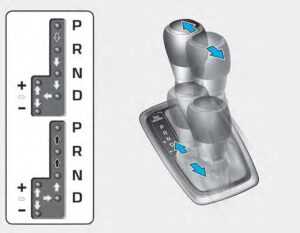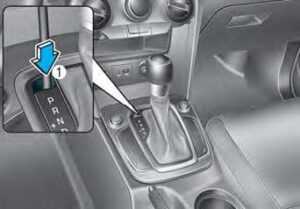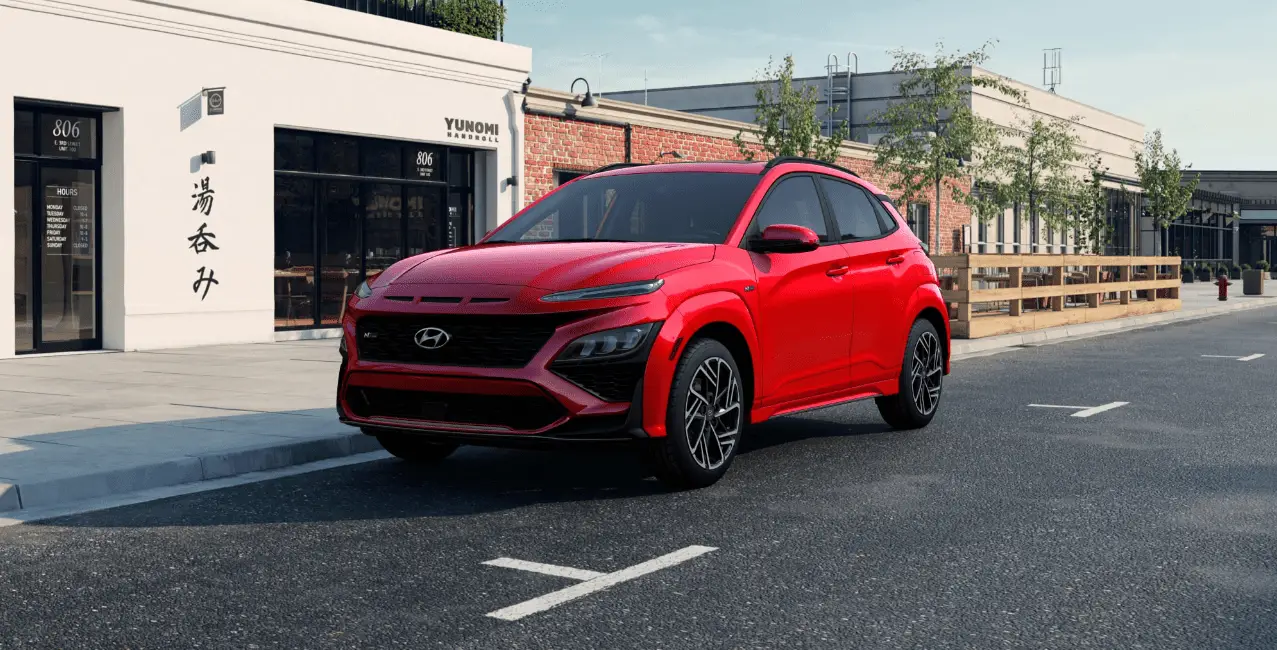Hyundai Kona 2023 Vehicle Auto-Shut Off and Intelligent Variable
The 2023 Hyundai Kona’s Intelligent Variable Introduction and Auto-Shut Off are cutting-edge methods of maximizing fuel economy and engine efficiency. These features highlight Hyundai’s dedication to environmentally friendly and cost-effective driving. Examples of this cutting-edge technology are Intelligent Variable Transmissions (IVTs) and automated engine shut-off during idle periods. When the car is stopped, as at a stop sign, the Auto-Shut Off feature cleverly pauses the engine to cut down on pollution and wasteful fuel use. In the meantime, by continuously modifying gear ratios to suit driving situations, the IVT improves driving dynamics and fuel efficiency. Hyundai’s commitment to a cleaner and more efficient driving future is demonstrated by these engine management advancements in the 2023 Kona.
2023 Hyundai KONA Specs, Price, Features, Milage (Brochure)
Vehicle Auto-Shut Off
If your vehicle is parked and the engine is left on for a long period of time, the engine will turn off automatically to help reduce fuel consumption and prevent accidents caused by carbon dioxide poisoning.
Operating Conditions
Vehicle Auto-Shut Off timer operates when all the following conditions are satisfied:
- Vehicle speed is below 1.8 mph (3 km/h), and the gear is shifted to P (Park)
- The brake pedal and accelerator pedal are not depressed
- The driver’s seat belt is unfastened
- The passenger seat is empty
- The infotainment system is not being updated
Deactivating Conditions
The vehicle Auto-Shut Off timer turns off when one of the situations occurs:
- Vehicle speed is above 1.8 mph (3 km/h)
- The gear is shifted to R (Reverse), D (Drive) or N (Neutral)
- The brake pedal or accelerator pedal is depressed
- The driver’s seat belt is fastened
- A passenger is in the passenger’s seat
System Operation

When all the conditions are satisfied, the Vehicle Auto-Shut Off operates and turns the engine off automatically after 60 minutes. A timer appears on the instrument cluster 30 minutes before vehicle shut off.
Resetting cluster timer
To reset the cluster timer, do one of the following:
- Release the accelerator pedal or brake pedal after the Vehicle Auto-Shut Off is complete.
- Press the OK button on the steering wheel while the timer appears on the instrument cluster.
CAUTION
Do not leave a passenger or a pet in the vehicle in hot weather since the air conditioning system turns off when the engine is off.
Intelligent Variable Transmission

- Depress the brake pedal, press the shift button ahead of the shift lever, and then move the shift lever. Press the shift button, then move the shift lever. Move the shift lever.
Intelligent Variable Transmission Operation
The Intelligent variable transmission has no actual fixed gears. The varying gear ratios are selected automatically, depending on the position of the shift lever, the vehicle’s speed and the position of the accelerator pedal. The indicator in the instrument cluster displays the shift lever position when the ignition switch is in the ON position.
WARNING
To reduce the risk of serious injury or death:
- ALWAYS check the surrounding areas near your vehicle for people, especially children, before shifting a vehicle into D (Drive) or R (Reverse). Before leaving the driver’s seat, always make sure the shift lever is in the P (Park) position, then set the parking brake, and place the ignition switch in the LOCK/OFF position. Unexpected and sudden vehicle movement can occur if these precautions are not followed. Do not use engine braking (shifting from a high gear to a lower gear) rapidly on slippery roads. The vehicle may slip causing an accident.
P (Park)
Always come to a complete stop before shifting into P (Park). To shift from P (Park), you must depress firmly on the brake pedal and make sure your foot is off the accelerator pedal. If you have done all of the above and still cannot shift the lever out of (Park), see “Shift-Lock Release” in this chapter. The shift lever must be in P (Park) before turning the engine off.
WARNING
Shifting into P (Park) while the vehicle is in motion may cause you to lose control of the vehicle. After the vehicle has stopped, always make sure the shift lever is in P (Park), apply the parking brake, and turn the engine off. When parking on an incline, shift the gear to P (Park) and apply the parking brake to prevent the vehicle from rolling downhill. Do not use the P (Park) position in place of the parking brake.
R (Reverse)
Use this position to drive the vehicle backward.
NOTICE
Always come to a complete stop before shifting into or out of R (Reverse); you may damage the transmission if you shift into R (Reverse) while the vehicle is in motion.
N (Neutral)
The wheels and transmission are not engaged. Use N (Neutral) if you need to restart a stalled engine, or if it is necessary to stop with the engine ON. Shift into P (Park) if you need to leave your vehicle for any reason. Always depress the brake pedal when you are shifting from N (Neutral) to another gear.
WARNING
Do not shift into gear unless your foot is firmly on the brake pedal. Shifting into gear when the engine is running at high speed can cause the vehicle to move very rapidly. You could \ lose control of the vehicle and hit people or objects.
D (Drive)
This is the normal forward driving position. The transmission will automatically shift to the optimal gear ratio, providing better fuel efficiency and a smoother ride. For extra power when passing another vehicle or driving uphill, depress the accelerator further until you feel the transmission downshift to a lower gear. The DRIVE MODE switch, located on the shift lever console, allows the driver to switch from NORMAL mode to SPORT mode. For more details, refer to “Drive Mode Integrated Control System” later in this chapter.

Manual shift mode
Whether the vehicle is stationary or in motion, manual shift mode is selected by pulling the shift lever from the D (Drive) position into the manual gate. To return to D (Drive) range operation, push the shift lever back into the main gate. In Manual Shift mode, moving the shift lever backward (B) and forwards(A) will allow you to select the desired range of gears for the current driving conditions.
+ (Up) : Push the lever forward(A) once to shift up one gear.
– (Down) : Pull the lever backwards(B) once to shift down one gear.
Information
Only the eight forward(A) gears can be selected in Manual Shift mode. To reverse or park the vehicle, move the shift lever to the R (Reverse) or P (Park) position as required. Downshifts are made automatically when the vehicle slows down. When the vehicle stops, 1st gear is automatically selected. When the engine rpm approaches the red zone the transmission will upshift automatically.
Shift-lock system
To shift the transmission from P (Park) into R (Reverse):
- Depress and hold the brake pedal.
- Start the engine or place the ignition switch in the ON position.
- Move the shift lever.
Shift-lock release
If the shift lever cannot be moved from the P (Park) position into R (Reverse) position with the brake pedal depressed, continue depressing the brake, and then do the following:
- Place the ignition switch in the LOCK/OFF position.
- Apply the parking brake.
- Carefully remove the cap (1) covering the shift-lock release access hole.
- Insert a tool (for example, flathead screwdriver) into the access hole and press down on the tool.
- Move the shift lever while holding down the screwdriver.
- Remove the tool from the shift-lock release access hole then install the cap.
- Depress the brake pedal, and then restart the engine.
If you need to use the shift-lock release, have your vehicle inspected by an authorized HYUNDAI dealer immediately.
Ignition key interlock system
The ignition key cannot be removed unless the shift lever is in the P (Park) position.
Parking
Always come to a complete stop and continue to depress the brake pedal. Move the shift lever into the P (Park) position, apply the parking brake, and place the ignition switch in the LOCK/OFF position. Take the Key with you when exiting the vehicle.
WARNING
When you stay in the vehicle with the engine running, be careful not to depress the accelerator pedal for a long period of time. The engine or exhaust system may overheat and start a fire. The exhaust gas and the exhaust system are very hot. Keep away from the exhaust system components. Do not stop or park over flammable materials, such as dry grass, paper or leaves. They may ignite and cause a fire.
Good Driving Practices
- Never move the shift lever from P (Park) or N (Neutral) to any other position with the accelerator pedal depressed.
- Never move the shift lever into P (Park) when the vehicle is in motion. Be sure the vehicle is completely stopped before you attempt to shift into R (Reverse) or D (Drive).
- Do not move the shift lever to N (Neutral) when driving. Doing so may result in an accident because of a loss of engine braking and the transmission could be damaged.
- Driving uphill or downhill, always shift to D (Drive) when driving forward or to R (Reverse) when driving backward, and check the gear position indicated on the cluster before driving. If you drive in the opposite direction of the selected gear, the engine will turn off and a serious accident might occur due to the degraded brake performance.
- Do not drive with your foot resting on the brake pedal. Even light, but consistent pedal pressure can result in the brakes overheating, brake wear, and possibly even brake failure.
- Depressing both accelerator and brake pedals at the same time can trigger logic for engine power reduction to ensure vehicle deceleration. Vehicle acceleration will resume after the brake pedal is released.
- When driving in Manual Shift mode, slow down before shifting to a lower gear. Otherwise, the lower gear may not be engaged if the engine RPMs are outside of the allowable range.
- Always apply the parking brake when leaving the vehicle. Do not depend on placing the transmission in P (Park) to keep the vehicle from moving.
- Exercise extreme caution when driving on a slippery surface. Be especially careful when braking, accelerating, or shifting gears. On a slippery surface, an abrupt change in vehicle speed can cause the drive wheels to lose traction and may cause loss of vehicle control resulting in an accident.
- Optimum vehicle performance and economy is obtained by smoothly depressing and releasing the accelerator.
WARNING
To reduce the risk of SERIOUS INJURY or DEATH:
- ALWAYS wear your seatbelt. In a collision, an unbelted occupant is significantly more likely to be seriously injured or killed than a properly belted occupant.
- Avoid high speeds when cornering or turning.
- Do not make quick steering wheel movements, such as sharp lane changes or fast, sharp turns.
- The risk of rollover is greatly increased if you lose control of your vehicle at highway speeds.
- Loss of control often occurs if two or more wheels drop off the roadway and the driver oversteers to reenter the roadway.
- In the event your vehicle leaves the roadway, do not steer sharply. Instead, slow down before pulling back into the travel lanes.
- HYUNDAI recommends you follow all posted speed limits.
FAQ
The Auto-Shut Off feature automatically turns off the engine when the vehicle is stationary, such as at traffic lights, to save fuel and reduce emissions.
The system typically uses sensors to detect when the vehicle is idling and then shuts off the engine. It restarts the engine when you release the brake pedal or engage the accelerator.
Many vehicles allow you to disable the Auto-Shut Off feature temporarily if desired, but it may automatically reactivate when you restart the vehicle.
By reducing engine idling, the Auto-Shut Off feature can improve fuel efficiency and lower emissions, contributing to a more environmentally friendly driving experience.
In some cases, the Auto-Shut Off feature may temporarily reduce power to certain electrical systems to conserve energy, but this typically doesn’t impact comfort or safety.
The vehicle may offer settings that allow you to adjust the Auto-Shut Off parameters, such as the duration of engine idling before shutdown.
The IVT is an advanced transmission system that continuously adjusts gear ratios to optimize fuel efficiency and enhance driving performance.
IVT does not have traditional gears; instead, it uses a belt and pulley system to provide seamless and efficient power delivery, eliminating traditional gear shifts.
The IVT typically provides improved fuel efficiency and smoother acceleration by constantly adapting to driving conditions.
IVTs are usually fully automatic, but some models may offer a manual shift mode for added control.
The owner’s manual may include recommendations for a break-in period, and regular maintenance is essential to keep the IVT operating optimally.
Towing and off-road capabilities can vary depending on the vehicle’s configuration, so consult the owner’s manual for specific guidelines.
The combination of these features helps reduce fuel consumption both when the vehicle is stationary and during driving, enhancing overall fuel efficiency.
Drivers should be aware of how these technologies function and adapt their driving habits accordingly to maximize their benefits.
The owner’s manual typically provides maintenance guidelines for these systems, including regular engine maintenance and transmission fluid changes.
Useful Link
View Full User Guide: Hyundai Kona 2023 User Guide
Download Manuals: https://owners.hyundaiusa.com/us/en/resources/manuals-warranties.html
2023 Hyundai KONA Specs, Price, Features, Milage (Brochure)


